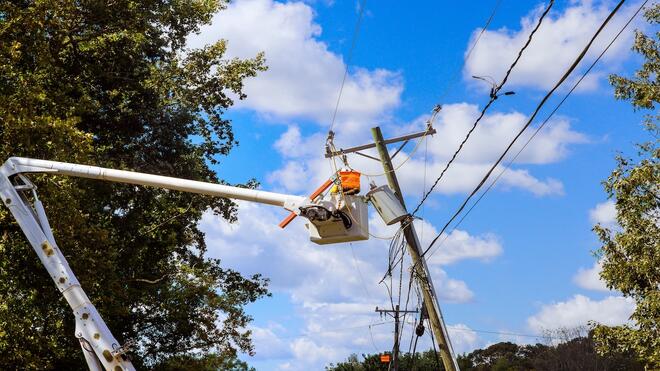Getting the Right Crews to the Right Place

Matching Skills to Put Communities on Their Feet Faster
By Dave Herlong
In the first two blogs of this series, we spoke about the logistics battlefield utilities face during storm recovery— and how fast, accurate storm damage assessment is the foundation for every subsequent decision. Just as critical, once you know what’s broken and where, there’s a second challenge: getting the right crews to the right places to speed recovery and get our communities up and running.
After a major storm, restoration crews spring into action or are activated. The local utility mobilizes every available internal team, while mutual aid and contractors flood in from all parts of the country. Some crews bring local experience, but many do not. These are dedicated professionals, first responders doing vital work, and they often arrive to help without detailed knowledge of the local grid, terrain, or utility-specific safety protocols.
That matters — a lot.
Imagine a military operation where teams respond to a dangerous event with scattered information, limited visibility, and no quick way to access vital details.
Utilities are under enormous pressure to restore power quickly, safely, and efficiently. But that can’t happen if crews don’t have the right tools, assignments, or situational awareness. And to make things even harder, crews aren’t sitting still. They’re constantly on the move, knocking out jobs, getting reassigned, rerouted, or regrouped. What was accurate an hour ago might be out of date now.
I’ve observed situations where a vegetation crew arrives at a job that still needs a utility line crew to finish their work. Sometimes, linemen are dispatched to a site only to find out a crew has already been there and completed the job. I’ve also seen mutual aid crews arrive ready to help but require extra time to coordinate with the host utility’s safety protocols before they can safely begin work. Each mismatch or delay increases pressure on an already complex recovery effort — and every minute counts.
That’s why shared, real-time field visibility is essential. And it’s precisely where modern storm response technology can give utilities the advantage.
Getting the right crew to the right job
Most utilities still rely on a mix of legacy systems, spreadsheets, radio chatter, and group texts to track restoration work. Some may have a work management system, but those platforms weren’t built for storm-scale speed and complexity. What’s needed is a map that moves as fast as the crews do — one that combines storm damage assessment with intelligent overlays that identify affected poles and transformers, highlight impacted feeders and circuits, and visualize outage clusters by severity. Add in the ability to prioritize by critical infrastructure and location-specific urgency, and you have a foundation for faster, smarter restoration.
It helps utilities allocate resources smarter. It reduces the risk of sending the wrong crew to the wrong job. It keeps people safer. And it helps mutual aid crews integrate faster by giving them a clear view of the host utility’s expectations and work processes — shortening the learning curve and accelerating progress.
Let me be clear: none of this replaces the people working hard in the field. It supports them. It gives them the context they need to make every action count. When you empower restoration teams with better information — where to go, what to expect, who’s already there — you reduce risk, gain speed, and keep communities informed.
That’s the difference between reactive coordination and proactive storm recovery. It’s how you turn damage data into decisions — and minutes into meaningful progress.

